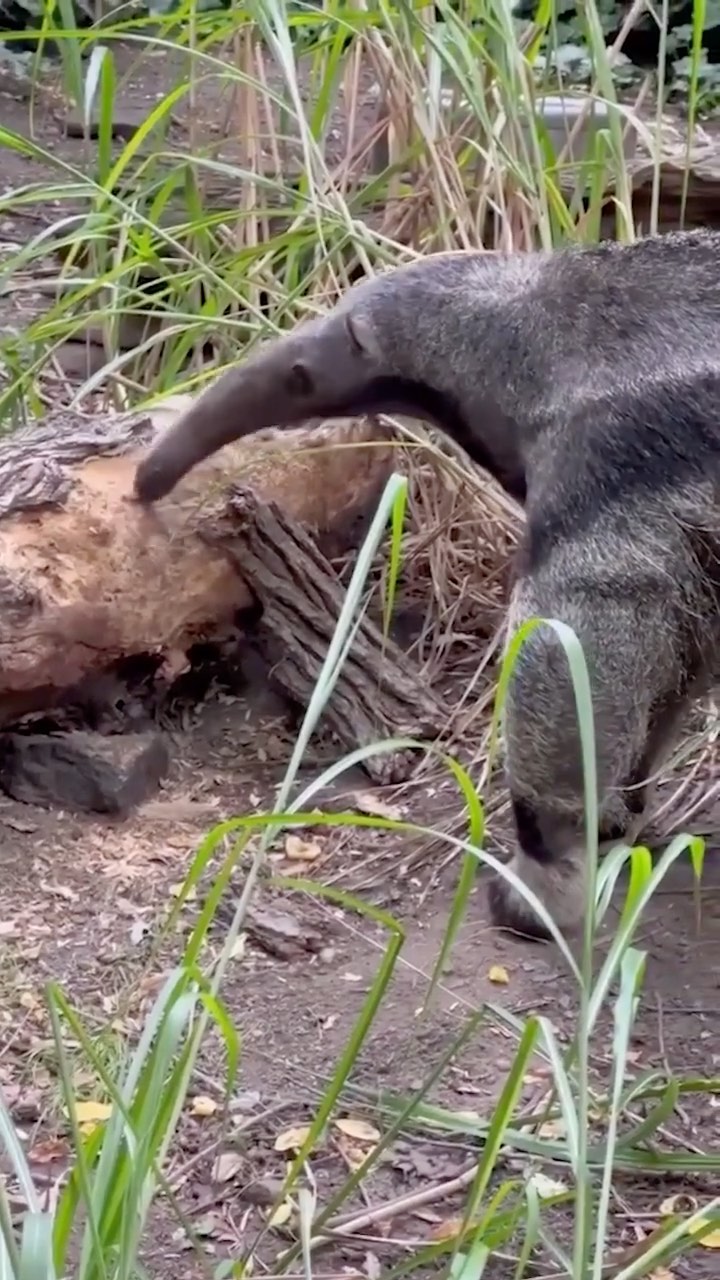- The biology and natural habitat of the giant anteater, with a focus on Central and South America.
- Velcro’s role and behavior in the Children’s Zoo, including her diet and foraging habits.
- Interesting facts about Velcro, including her age and daily routine.
- The significance of specialized tongue and claw adaptations in giant anteaters.
- Insights into zoo management and wildlife conservation practices at the Children’s Zoo.
Giant anteaters, with their intriguing physical adaptations and behaviors, are native to the diverse ecosystems of Central and South America. These unique mammals can be found in a variety of habitats, including grasslands, savannas, and dense forests. Their population, however, faces continual threats from habitat destruction and human activities, making their conservation crucial for maintaining ecological balance.
Velcro, a female giant anteater housed in the South America section of the Children’s Zoo, exemplifies the remarkable qualities of this species. Velcro has been a zoo resident for over a decade and is now 26 years old, an impressive age for an anteater. Her longevity and well-being highlight the effective care practices and the encompassing role of zookeepers in maintaining the health of their animal residents.
Giant anteaters, such as Velcro, specialize in foraging for ants and termites, which compose the bulk of their diet. Their powerful forelimbs and claws allow them to break into tough termite mounds and ant nests with ease. Despite their lack of teeth, giant anteaters have evolved a highly specialized tongue that can extend up to two feet and is coated with sticky saliva. This adaptation enables them to consume up to 30,000 insects daily, an essential part of their feeding strategy.
Velcro’s daily life in the Children’s Zoo is thoughtfully structured to mimic her natural behaviors as closely as possible. Each day, she receives a balanced diet prepared by the keepers, which supplements her natural foraging activity. Her morning routine includes breakfast and enrichment activities designed to stimulate her physically and mentally. Assistant Supervisor Courtney notes that Velcro has a favorite sunny spot where she takes her naps, demonstrating her preference for comfort and routine.
The absence of teeth in giant anteaters is a fascinating evolutionary adaptation. Their diet is efficiently managed with the help of their elongated snout and tongue. This absence of teeth means that anteaters do not chew their food. Instead, they rely on their stomach’s strong muscles and digestive acids to break down the ingested insects. This highly effective digestion method enables them to extract maximum nutritional value from their diet.
Velcro’s powerful claws, typically four inches long, are also integral to her survival skillset. These claws are used not only for foraging but also for self-defense against predators. In the wild, these claws are a crucial adaptation that allows anteaters to dig through tough soil and wood to access their insect prey.
Zoo management practices at the Children’s Zoo reflect a deep commitment to animal welfare and conservation. The keepers work diligently to replicate conditions that allow animals like Velcro to exhibit natural behaviors. This includes enrichment items that stimulate foraging, sensory exploration, and physical activity. Additionally, the structured feeding schedules and diet plans are tailored to meet the specific dietary needs of each species.
Having a resident like Velcro offers a dual advantage: she plays an educational role while benefiting from the comprehensive care that enhances her quality of life. Educational programs at the zoo leverage the presence of animals like Velcro to raise awareness about wildlife conservation. Visitors, particularly children, learn about the ecological roles of species and the importance of protecting their habitats.
Conservation efforts extend beyond the zoo. The care given to Velcro and other animals is part of broader initiatives that include research and habitat preservation projects. Zoos collaborate with global conservation organizations to safeguard endangered species and restore their natural environments. Genetic diversity is maintained through these partnerships, and populations are monitored to prevent declines.
In conclusion, the life of Velcro, the female giant anteater at the Children’s Zoo, provides a window into this species’ remarkable adaptations and behaviors. Her care regimen, developed by knowledgeable keepers, underscores the importance of appropriate diet, enrichment, and habitat simulation. The broader mission of zoos, encompassing education and conservation, highlights these institutions’ essential role in preserving wildlife for future generations.
*****
Source Description
Have you spotted our female giant anteater, Velcro in the South America section of the Children’s Zoo?
Giant anteaters are native to Central and South America. In addition to the daily diet Velcro receives from keepers in this video, she is doing what anteaters do best, she’s using her powerful forelimbs and claws to forage for ants and termites. Giant anteaters have no teeth, but their specialized tongue allows them to eat up to 30,000 insects a day!
Another fun fact? Velcro is 26 years old and has been a resident at the Children’s Zoo for over 10 years. According to Assistant Supervisor Courtnie, she always finds the perfect spot in the sun for a nap after her breakfast and morning enrichment.
📹: Asst Supervisor Courtnie


